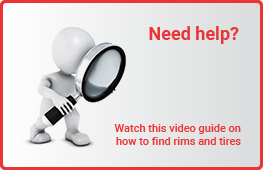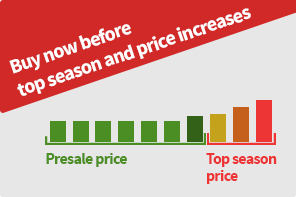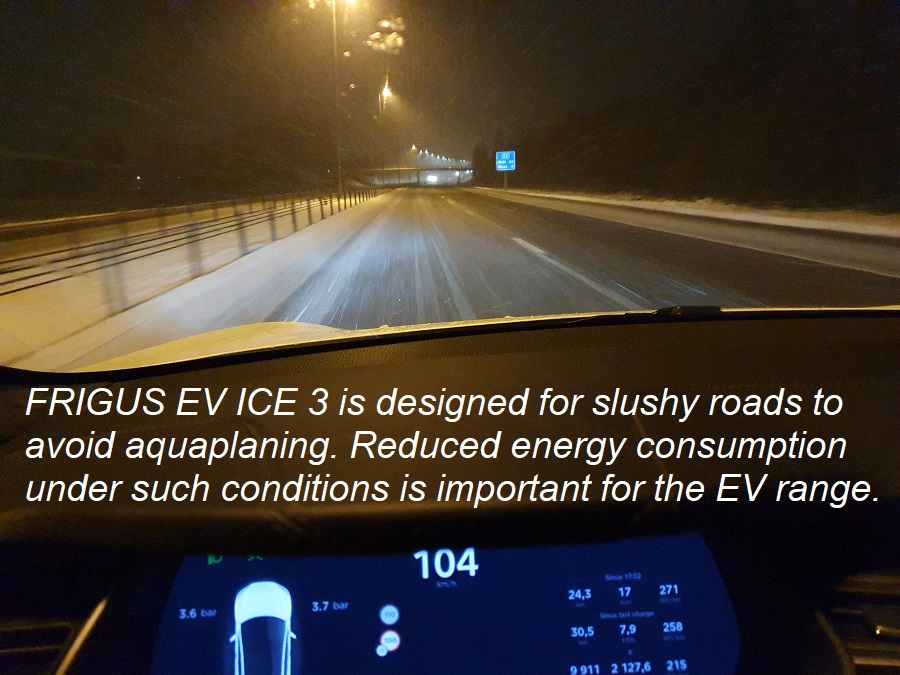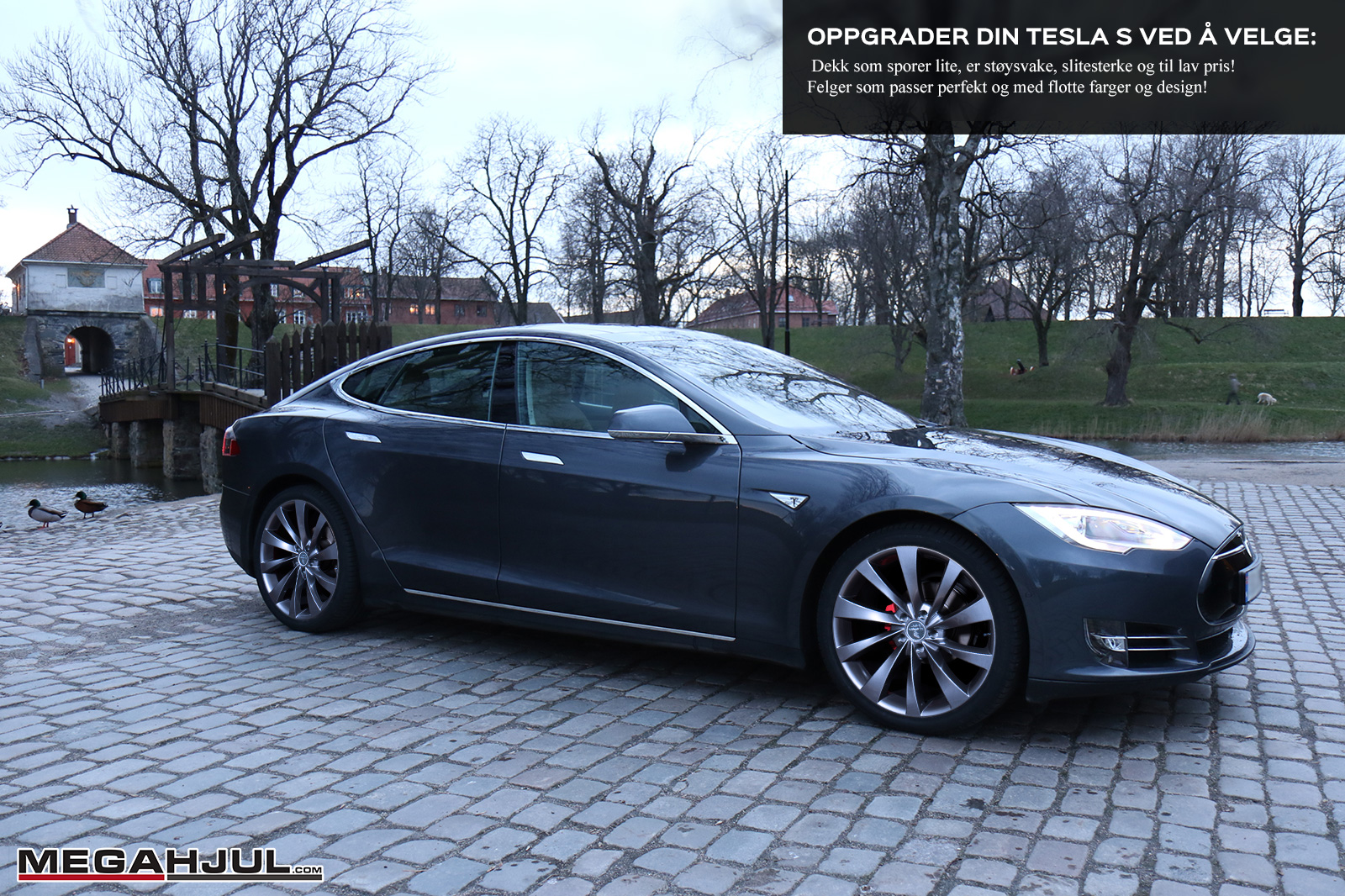WHAT YOU NEED TO KNOW ABOUT WINTER TIRES FOR TESLA S
THE NEW FRIGUS EV ICE 3 -WHICH SUPERSEEDE NEREUS NS805, IS SUPERIOR ON SNOW AND WET ASPHALT BUT STILL PERFORMES GREAT ON ICE.
The author of this article is driving his fourth model S in addition to a model X. They are all used for a lot of tire testing. The opinions presented in this article is based on these tests, feedback from thousands of independent customers and 30 years of experience in the tire business.
The Tesla model S is a technical wonder car, which also sports proven electronics and technology for operating in cold and humid winter weather. The driving characteristics has also been well tested on icy surfaces, after almost 5 winter seasons. Tesla is also constantly upgrading it with new technology that improves performance and functionality. However, Tesla tires and rims are notoriously expensive, and reserve-rims usually cost 5-6 times more than aftermarket alternatives. What’s most important is to make the car as safe as possible, without sacrificing comfort. Tires made exclusively for ice work great on that particular condition, but compared to winter tires with better longitudinal drainage patterns and better wet grip, they have a negative impact on how the car handles most other surfaces.
5 YEAR WARRANTY ON FRIGUS EV ICE 3 AND NEREUS
The industry's best purchase-insurance is also simple and easy. 5-year warranty against product defects, which cover poor rubber quality, construction defects, malfunction, etc. We have so good experiences with Nereus that we provide a satisfaction-warranty for all customers. If you are not satisfied with Nereus, you can switch to another tire brand of your choice. The price difference is paid / refurbished without paying for labor costs. The replacement fee applies as long as the tire is not worn down. Ie that you can not wear down more than 1 mm of the rubber. Normally that means you can drive a few hundred miles and test the tire properly before you finally decide.
TESLA EVENTS IN OSLO WITH TESTDRIVING.
We have pre-made test-sets with most of the tire brands available. That way you can easily compare Nereus to Nokian, Conti, Vredestein, Michelin, Goodyear and others, yourself. In 2018 we plan to arrange Tesla evenings at our workshop in Oslo where you can test them all in one evening. The author is reasonably confident that most will conclude as himself. The theme is Nereus against '' everyone '' where we provoke test drivers to find winter roads where Nereus is not better than other tire brands. The test should be done on normal winter roads with dry and wet asphalt, slush and ice, snow on ice and all other relevant winter road conditions. Everyone can do the noise test and control the rolling resistance as well.
IMPROVED SECURITY ON THE ROAD WITH '' ANTI-HYDRO PLANING '' PATTERN AND BETTER WET-GRIP
By choosing tires that are better adapted to driving on wet asphalt and slush, you gain safety and comfort. On solid ice, no studless tire will really grip, and it’s hard to objectively compare the different tires on a skating rink. Therefore, the tire tests we read about each winter usually rely heavily on subjective and anecdotal evidence. As they are usually done on a VW Golf or Ford Focus (not comparable to a Tesla), they effectively become nothing but smart advertising for the winners (in the United States this would probably be punished on a par with the VW diesel scandal). As a driver, you should care just as much about the characteristics the tires give you during normal driving on varied conditions, mainly driving on asphalt with at times some water, snow and slush. And on these conditions, it’s easy to document the major differences. Wet grip on the Nereus 805 is rated C, compared to F on the market leaders Nokian and Continental. It is claimed by the industry that this amounts to up to 2 car lengths. We have not been able to accurately measure this, but compared to on ice-tests, there is no doubt that there is a significant difference.
HYDROPLANING ON WATER AND SLUSH IS NORMAL ON NORWEGIAN WINTER ROADS
Hydroplaning is not fun, and something all motorists want to avoid. Who hasn’t experienced that the car has lost road grip when driving during heavy snow or wet conditions?
The author has conducted a series of tests that everyone can retrospectively review. With a lot of water on the road, the car detected hydroplaning between 80 and 90 with Nokian and Continental tires, while the Nereus 805 tire simply didn’t hydroplane up to 120 km/h. The trials have been done a number of times, and although it is slightly different between each attempt, there is a huge difference between Nereus and the well-known brands. Everything is self-evident when you study the tire patterns. At speeds over 80, the water has to move'' through '' the tire pattern since the speeds are too large for water to be squeezed out to the sides. Tires without a continuous vertical pattern will thus push the water in front of it, and when the speed high enough, the tire will lift over the water film. This is when hydroplaning occurs.
EXTREME WINTER SKILLS
The 805+ pattern is also well adopted for the usual hard-packed snow and ice you meet in the mountains, and that a lot of people worry about. A heavy car like the Model S utilizes the many slats that the tire is fitted with to dig into the snow. It has more slats than Continental and Nokian and the same soft rubber mix, making it great on ice. Nevertheless, wet grip on wet asphalt is significantly better due to the more proper tire pattern. It is not designed for the best possible lap times on a skating rink and sideways fastening, but to provide the best possible performance on normal roads with top performance on braking and grip. For everyone with a bit of technical understanding, this is logical and easy to understand.
FROM NOKIAN TO NEXEN TO NEREUS TO FRIGUS EV ICE 3
The author (who also drives Tesla S daily) has tested many different Tesla S models with most available winter tires. The conclusion is that '' all of them '' work on the 4-wheel models, even during the most extreme winter conditions. Hard rubber is a bit better on asphalt and a bit worse on ice. Soft rubber opposite.
The first Tesla was delivered with Nokian tires, which were replaced with Nexen. This was to reduce hydroplaning and increase range. Nereus excelled during testing last winter (Jan-Feb.2017), and compared to known tire brands, they showed much value-for-money. Noise and rolling resistance are measurable (actually measured and not EU value) and show that the tire stands out on important el-vehicle characteristics (see documentation further down). We also work with ice tests that are measurable as well as roll resistance on wet roads. This is more complicated since the test should be possible to replicate exactly, to eliminate any doubt about the test results we present.
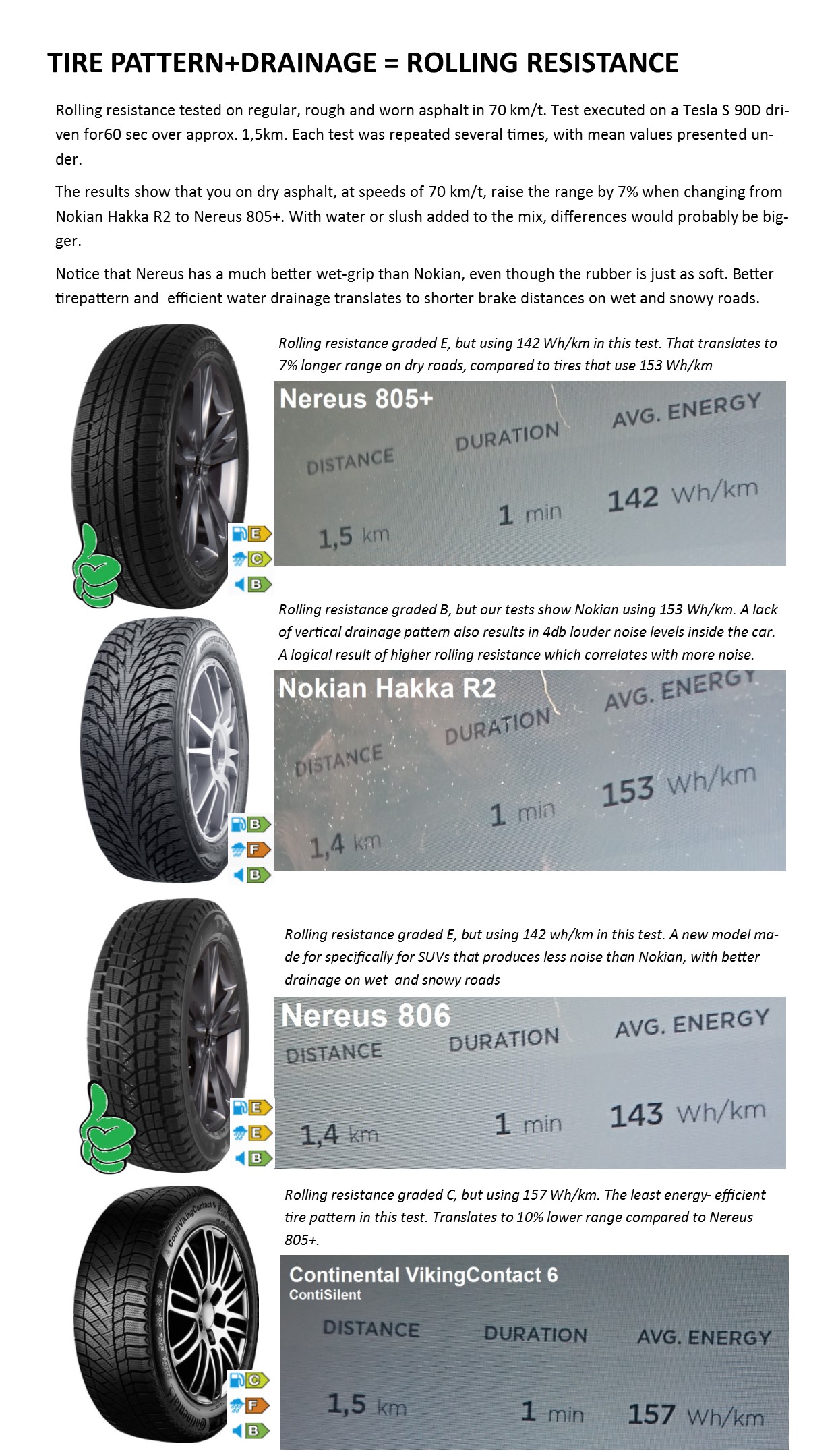
To those who ask if the tire has participated in any official tire tests, they are completely new in 2017. In our opinion, a tire test needs to be sufficiently reasonable and thorough for it to be published in the United States, the world's largest tire market. Yet we have not seen a single European tire-test used as marketing in the United States.
See the noise test of the Nereus Invovic 805+ below. This is easy to control with a mobile phone and the app '' soundmeter ''. Even though all phones are calibrated slightly different, you should still get the same results in comparison.NEREUS INVOVIC 805+ IS SUPERIOR ON SNOW AND WET ASPHALT BUT STILL PERFORMES GREAT ON ICE.

